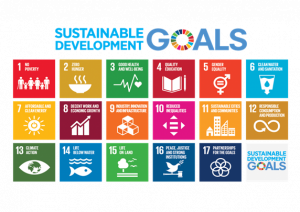1.1 Projects and Project Management
What is a Project?
According to PMBOK 7th edition, a project is a temporary endeavour undertaken to create a unique product, service, or result. The temporary nature of the projects indicates a beginning and end to the project work or a phase of the project work. Projects can stand alone or be part of a program or portfolio.
Organizations often choose to manage a related group of projects in a coordinated way to obtain benefits and control unachievable by managing projects individually. When this occurs, it is known as program management.
As an organization grows and matures, change becomes necessary to its sustained viability. Understanding the drivers of a change is the first step in understanding how the project should be managed. Some changes are mandatory. This is often the case with changing legislation and regulations. Mandatory changes often have compliance deadlines and penalties for non-compliance. Operational changes seek to address deficiencies in the day-to-day operations of an organization and can involve repairing or replacing equipment and facilities. Further, strategic changes are optional but once pursued, help take the organization to the next level of performance in the marketplace.
Regardless of the underlying driver(s) for a project, all projects have unique objectives. These unique objectives lead to specific and measurable time, as well as cost and performance requirements. Projects end when their objectives have been met, as well as when they are no longer desirable and/or achievable. In contrast, operational work is not temporary. Operational activities are ongoing and are performed to sustain the organization. The daily processing of sales transactions is a good example of an operational activity. In contrast, replacing the system that processes daily sales transactions is a project.
Projects and the United Nations 17 Sustainable Development Goals (SDGs)
The international community has responded to the sustainable development challenge with the Sustainable Development Goals (SDGs) for 2030. In their report, ‘Transforming Our World: The 2030 agenda for sustainable development’, was adopted by the United Nations General Assembly in 2015.
The 17 Sustainable Development Goals (SDGs) are “an urgent call for action by all countries”—developed and developing—in a global partnership. They recognize that ending poverty must go hand-in-hand with strategies that build economic growth and address a range of social needs including education, health, equality and job opportunities, while tackling climate change and working to preserve our ocean and forests (UNESCO, n.d.).
The 17 SDGs contain targets for building a better world for people & planet by 2030. Businesses, non-profits, Non-governmental Organizations (NGO’s), and educational institutions have developed their own frameworks to address the SDGs and meet individual targets.
This is relevant for project managers because much of tomorrow’s development will be delivered by project management professionals across all sectors.

Project Management
PMI PMBOK 7th edition defines project management as the application of knowledge, skills, tools, and techniques to project activities to meet project requirements. Project management refers to guiding the project work to deliver the intended outcomes. Project teams can achieve the outcomes using a broad range of approaches (e.g., predictive, hybrid and adaptive).
Project leaders are evaluated on how effectively they apply their project management knowledge, skills, tools, and techniques to a change in a functional area(s) and how effectively they prepare the functional area(s) to sustain the change. They ask themselves questions such as, “Will this change add value to the organization?” As a team, they may ask, “Will we deliver solutions when they are needed, within the funding parameters available in the organization, and will we meet the expectations of the end–user community?” They also frequently ask, “Are the stakeholders, including the impacted functional leaders, still supportive of the changes to be delivered?” Answers to these questions guide the project team’s work.
To help keep project management terms and concepts clear and consistent, PMI introduced the book “A Guide to the Project Management Body of Knowledge” (PMBOK Guide) in 1987. It was updated in 1996, 2000, 2004, 2009, 2013, 2017 and most recently in 2021 when the seventh edition was released.
PMI’s 2020 Pulse of the Profession, revealed that in organizations with mature project delivery practices, an average of 11 percent of the investments made in change was wasted due to poor project performance. Further, organizations that undervalue project management as a strategic competency for driving change report an average of 67 percent more of their projects failing outright. On a global scale, this translates into billions of dollars wasted. In these turbulent times, failures of this magnitude can lead to disastrous outcomes for organizations already struggling to survive. For those that do survive their failed change attempts, many find themselves forced to reimagine what they do and how they do it.
This new decade has introduced us to the “Project Economy.” Organizations are constantly searching for ways to adapt and thrive. This means high-stakes projects are frequently launched with a variety of titles, executed through a variety of approaches, and are focused on delivering financial and societal value.
https://www.youtube.com/watch?v=tcO0CLt_Ylc&t=8s
In the Project Economy, change is introduced rapidly, and some organizations call upon their functional managers to deliver low complexity change into their environments. These functional managers are often successful in leading these change initiatives when they have the needed skills and capacity to apply the appropriate project management tools and techniques while overseeing the daily operational activities of their teams. In addition, simple changes with a well-defined solution and a low level of complexity can be successfully introduced using predictive (also known as waterfall) development approaches.
However, if a functional manager lacks the skills required to manage a project or finds themselves frequently putting out fires started by product/service performance issues, unreliable suppliers, aggressive competitors, and/or ongoing human resource issues, a project management professional is often asked to lead the change. Furthermore, when the change requires cross-functional teams to understand the needs of the end customer and deeply explore these needs before building a solution, project management professionals are better suited for these types of change initiatives.
